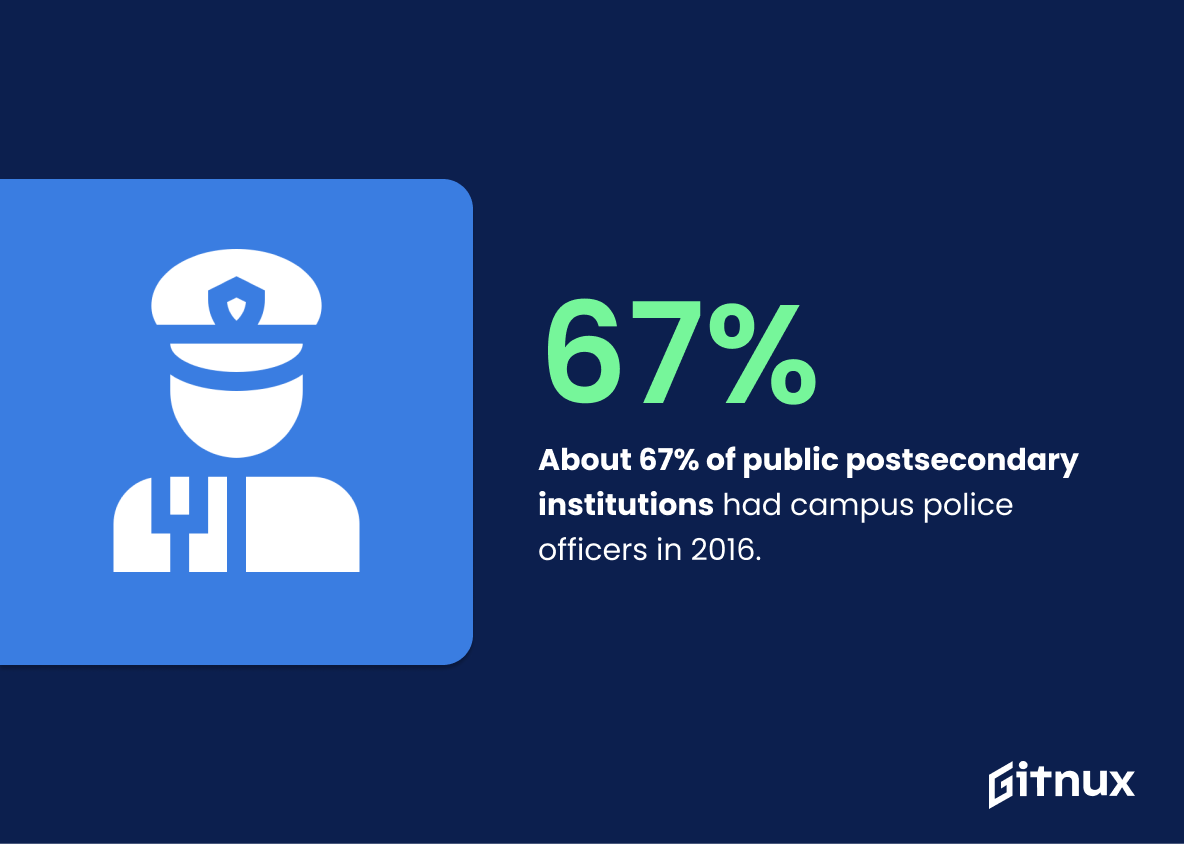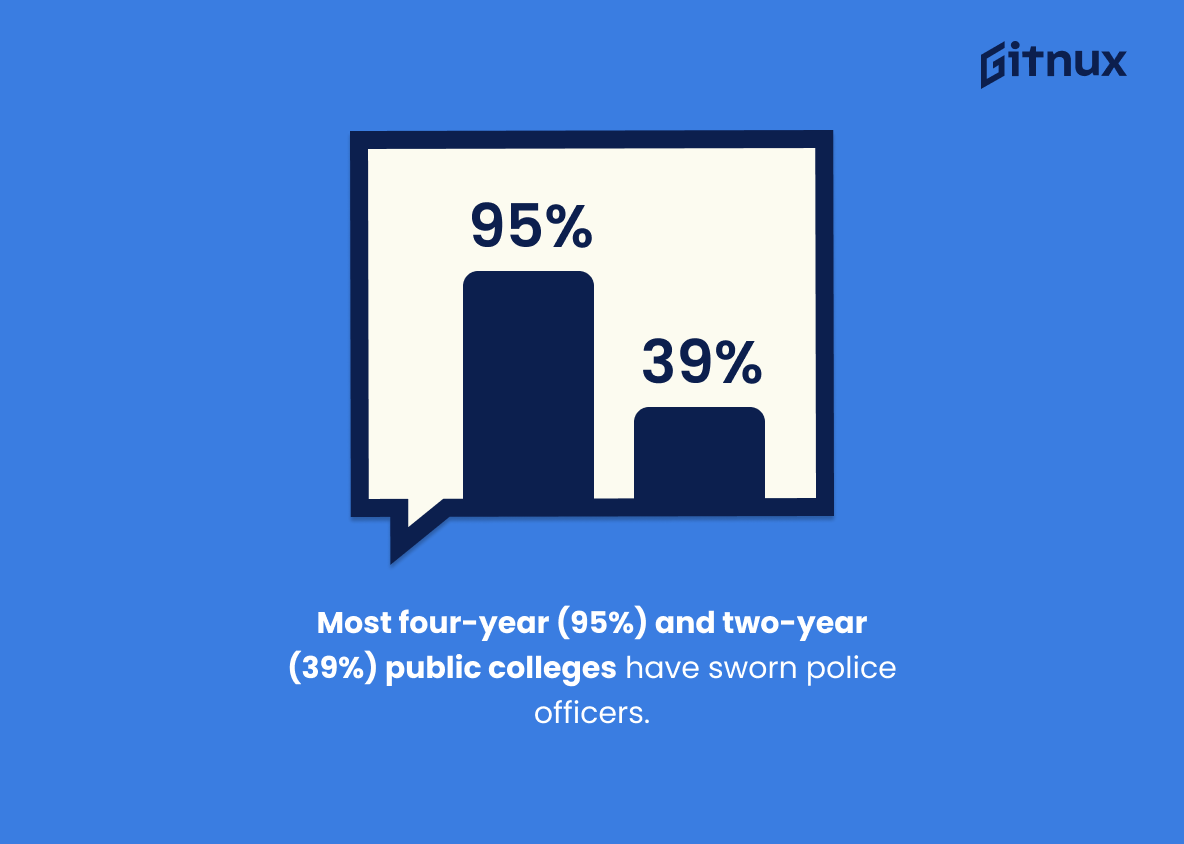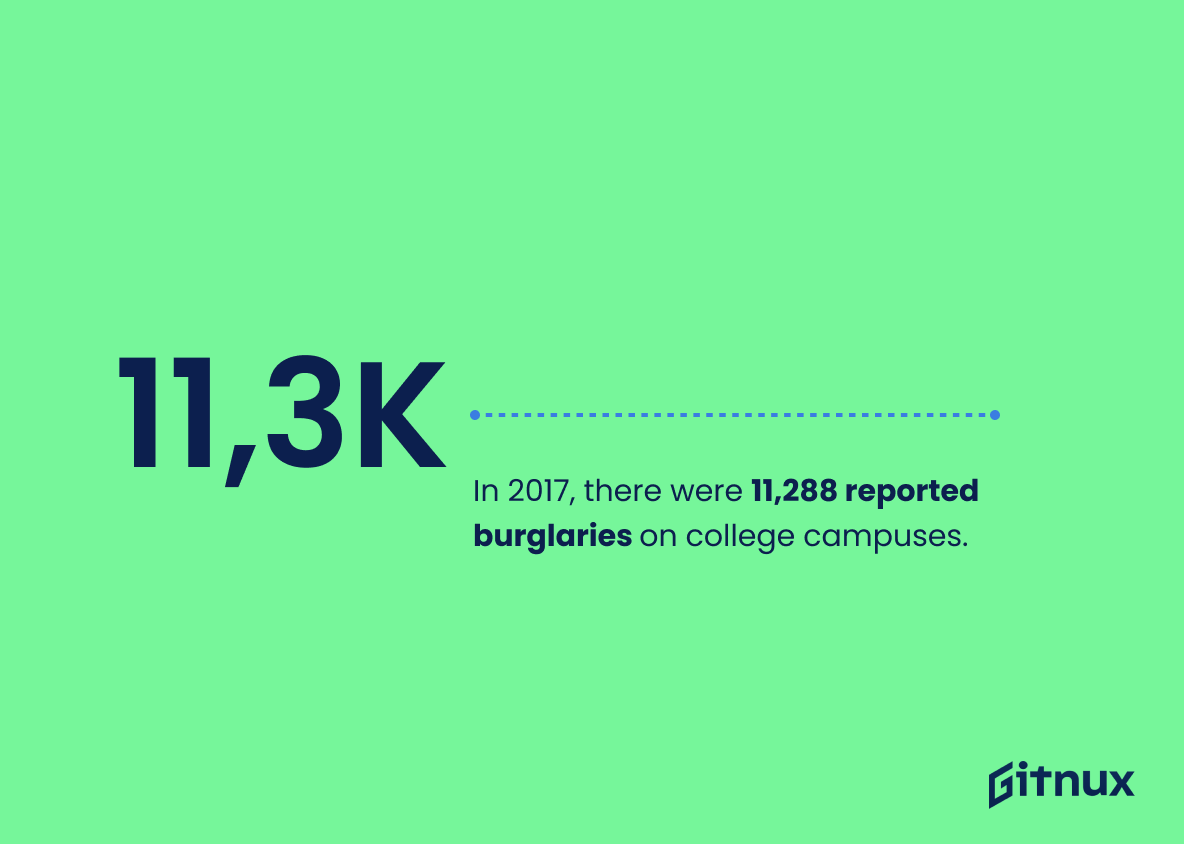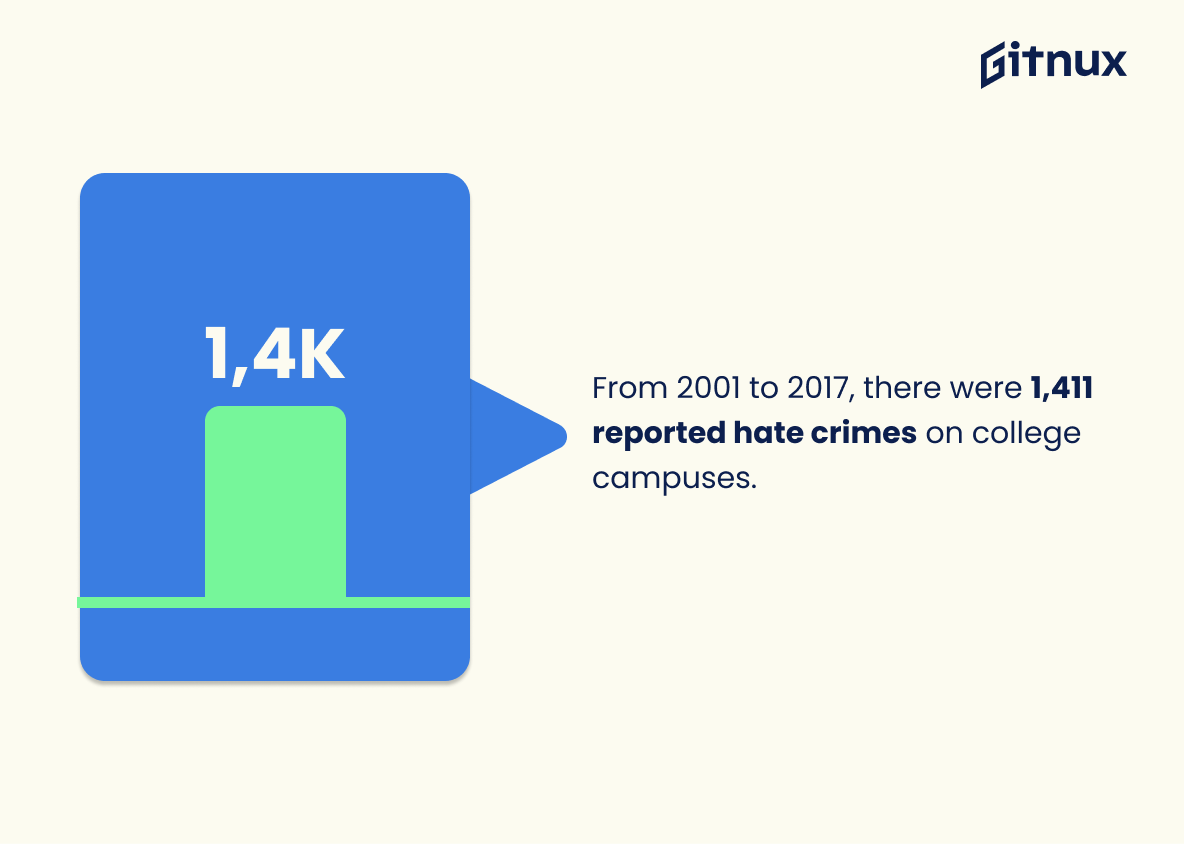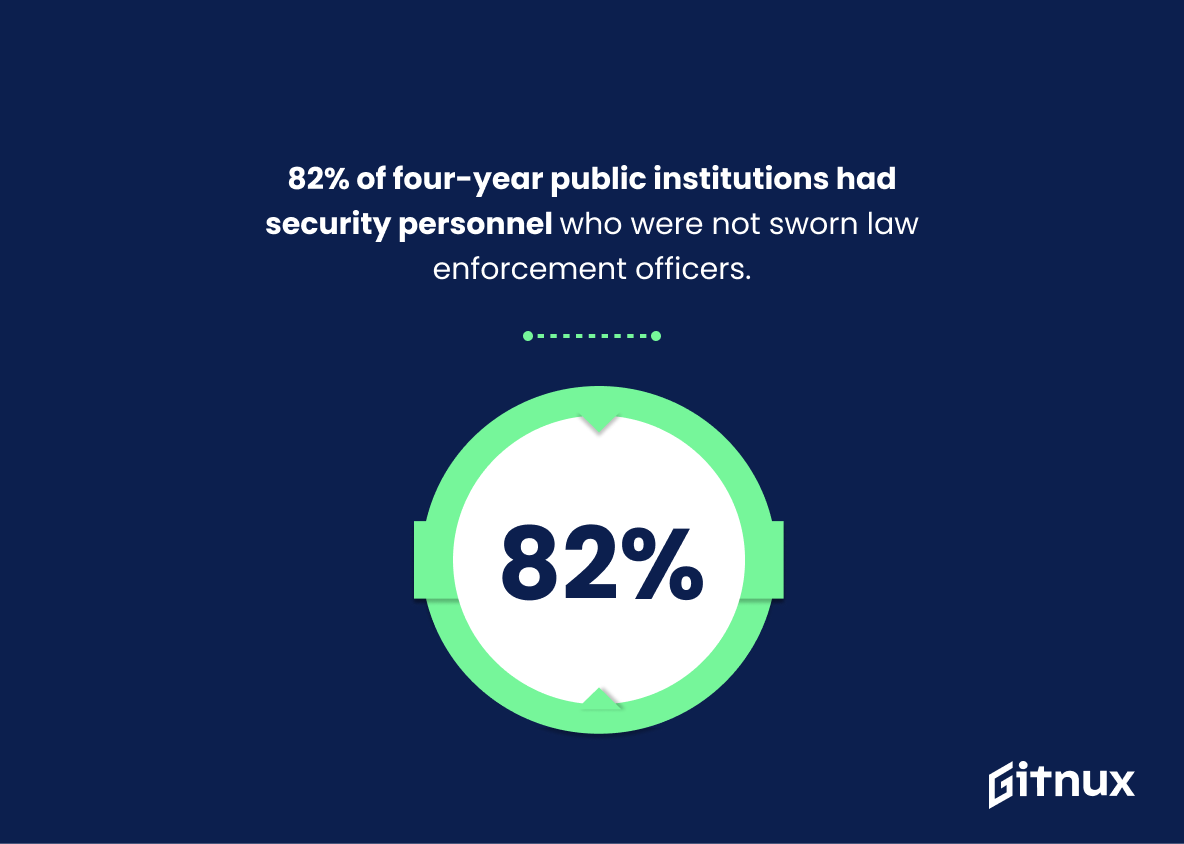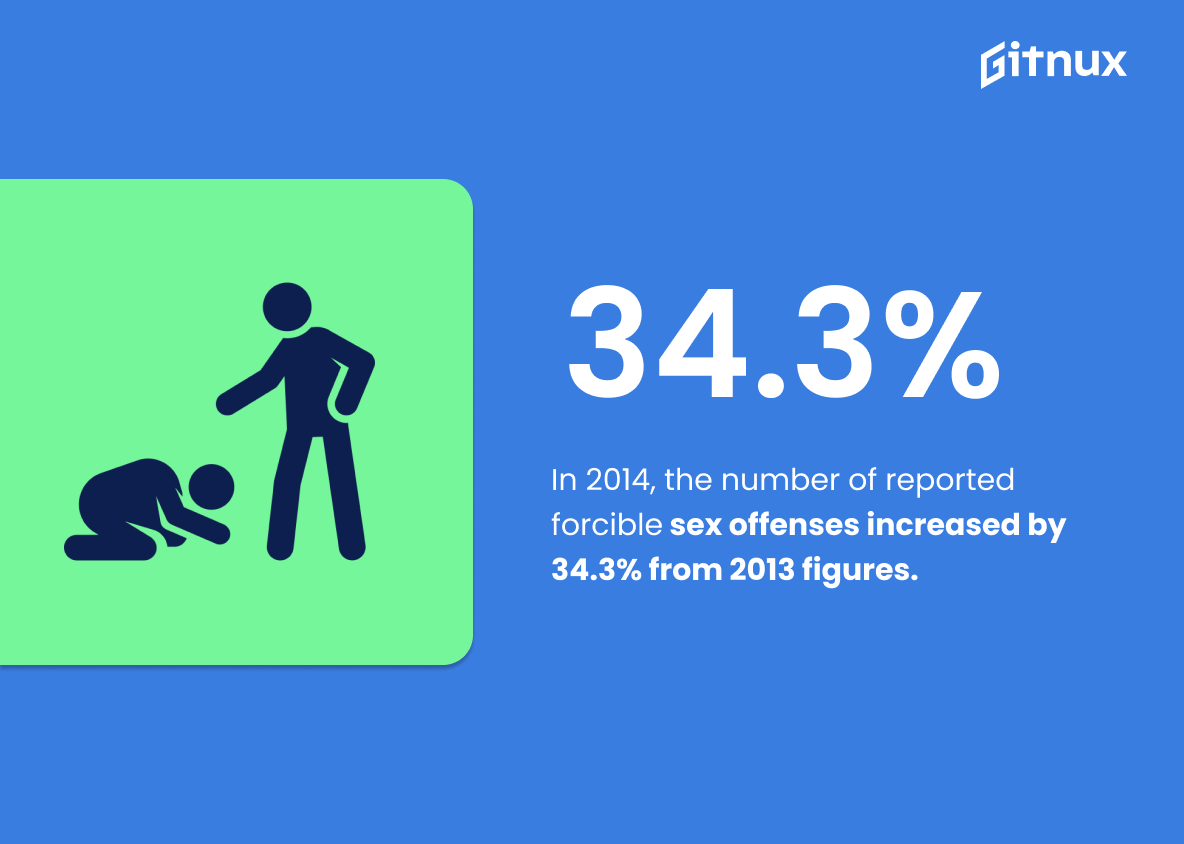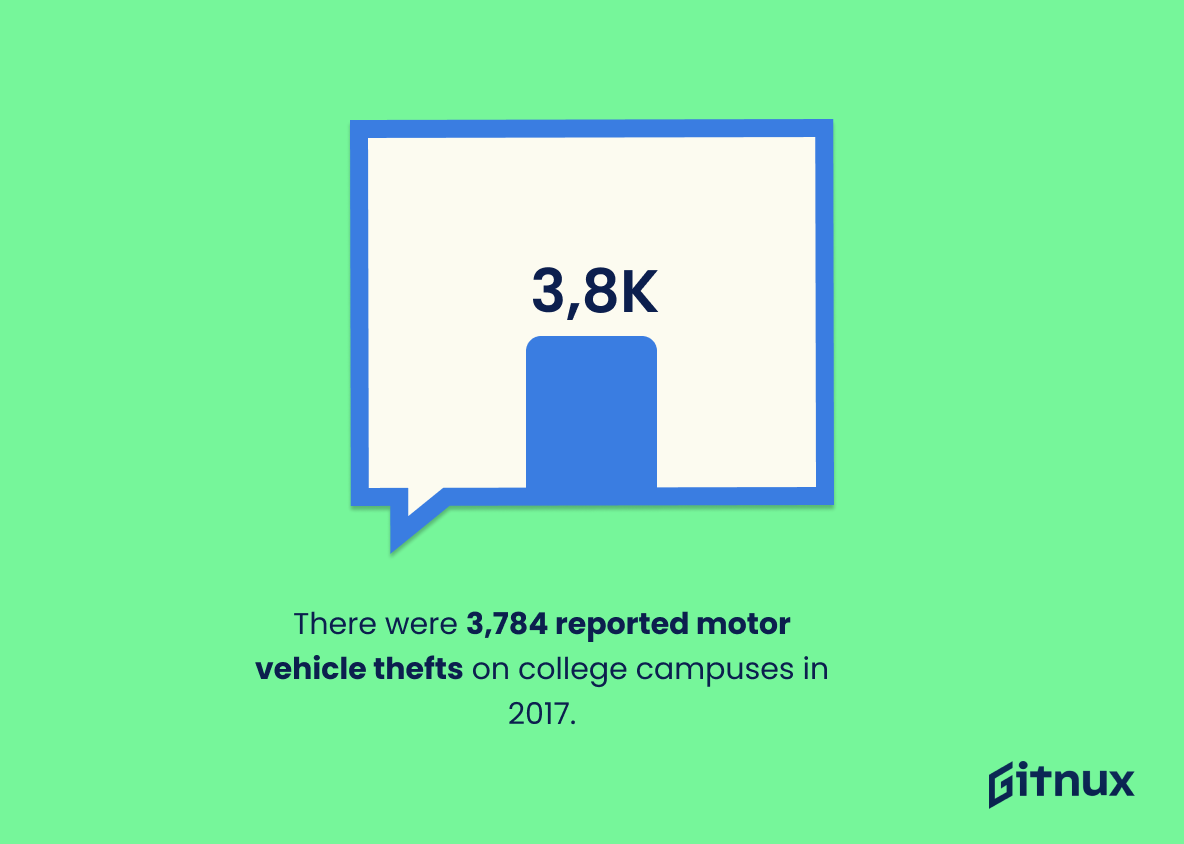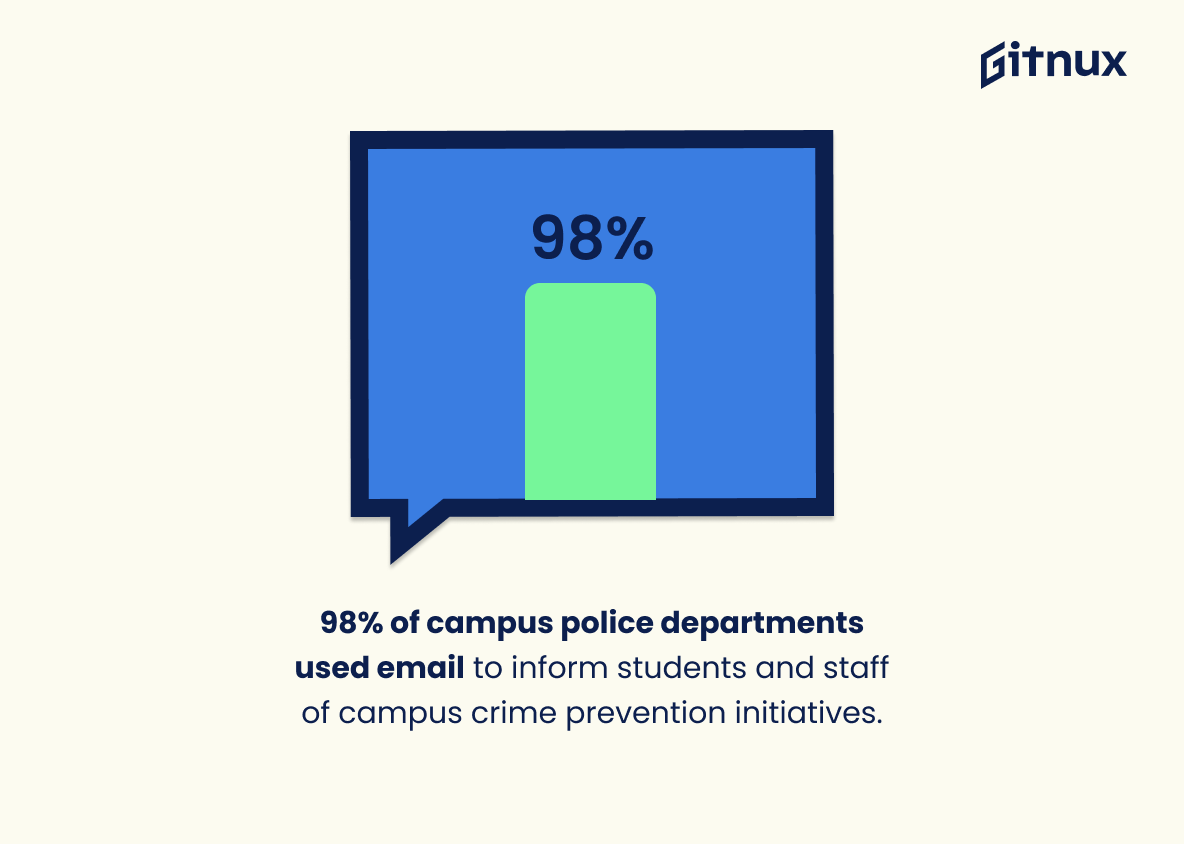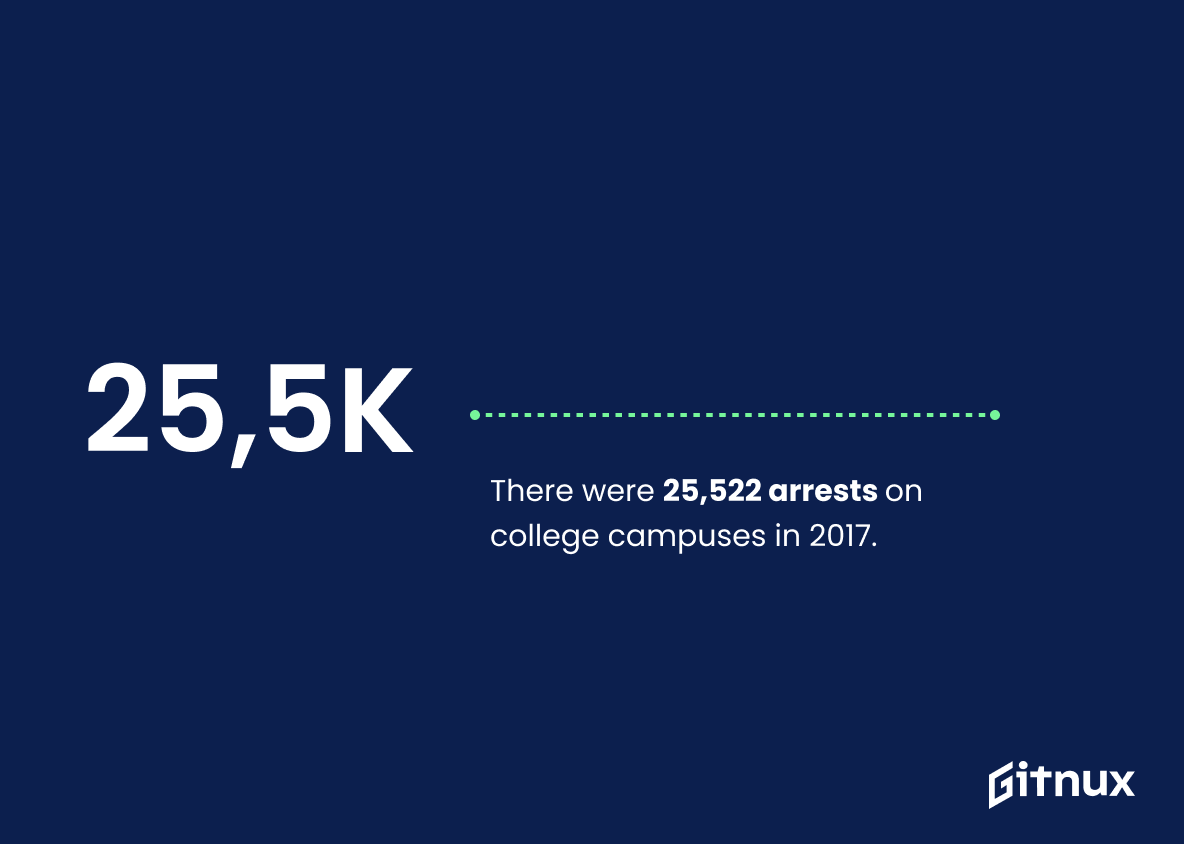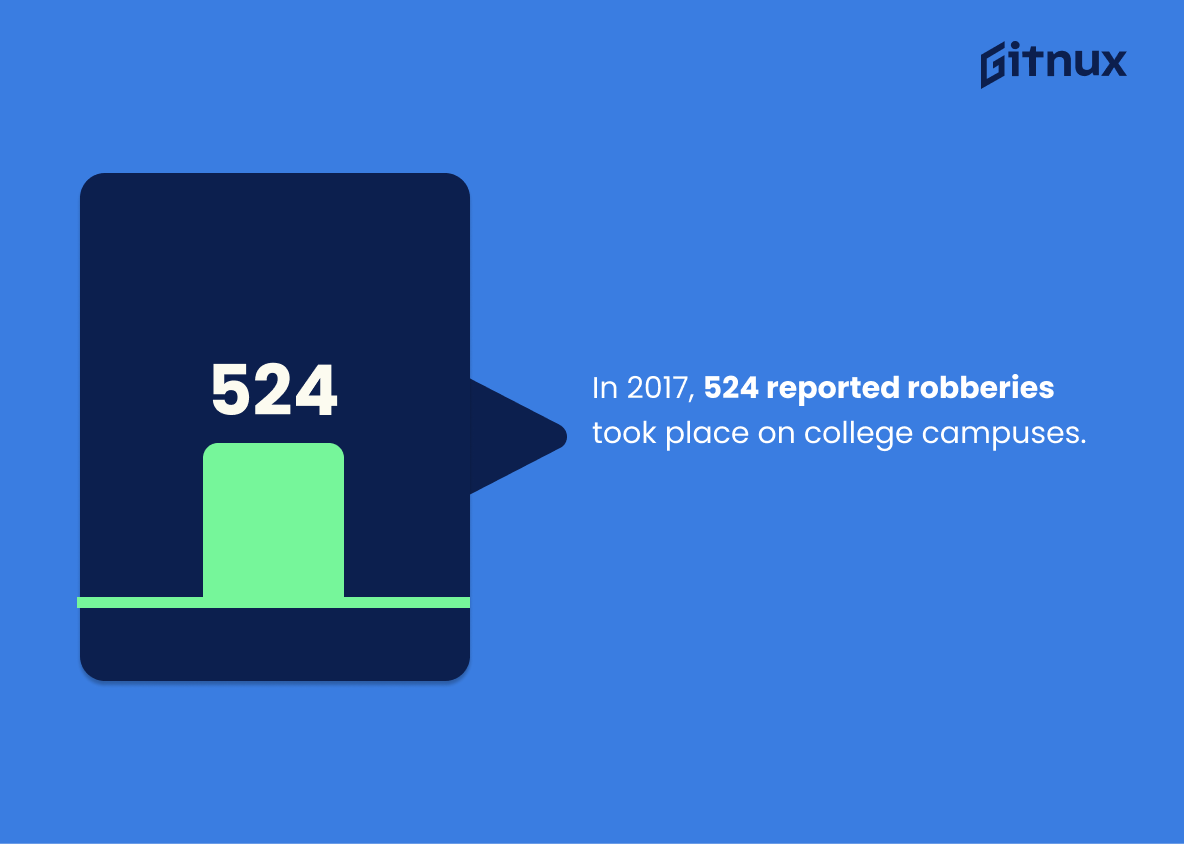College campuses are places of learning and growth, but they can also be dangerous. In 2017, there were 28,400 reported crimes on college campuses in the United States according to data from the National Center for Education Statistics (NCES). This number is a 6% decrease from 2016 figures.
Campus security personnel play an important role in keeping students safe. About 67% of public postsecondary institutions had campus police officers in 2016 while 95% of four-year public institutions and 39% of two-year public institutions employed sworn police officers with arrest authority that same year. Additionally, 82 percent of four-year public colleges have non-sworn security personnel who help protect their communities as well.
The types of crime vary greatly across college campuses; 11,288 burglaries were reported in 2017 along with 524 robberies and 2295 aggravated assaults during this time period as well. There was also 400 arsons reported on college campuses throughout the country that year too – all numbers which should not be taken lightly when considering safety measures at universities nationwide.. Furthermore, alcohol and drug related offenses accounted for 69 percent disciplinary actions on college campusses during this time frame indicating how prevalent these issues remain today despite efforts to reduce them through education initiatives or other means .
In addition to traditional law enforcement methods such as arrests (25522 total), many schools employ technology like surveillance cameras (65%) or fire emergency procedures (84%). Other tools used by campus police departments include stun guns/tasers carried by fulltime sworn officers(29%), email notifications about crime prevention initiatives(98%),and more recently sexual assault reporting systems designed specifically for student use (.270 incidents per 100000 female students) . All these statistics point towards one conclusion: College Campus Security remains a top priority among administrators looking out for their student’s best interests both now and into the future
College Campus Security Statistics Overview
About 67% of public postsecondary institutions had campus police officers in 2016.
This statistic is a telling indication of the importance of campus security in the modern college environment. It shows that the majority of public postsecondary institutions recognize the need for campus police officers to ensure the safety of their students and staff. This statistic is a reminder that college campuses are not immune to the dangers of the outside world, and that proactive measures must be taken to protect those within.
95% of four-year public institutions and 39% of two-year public institutions employed sworn police officers with arrest authority in 2016.
This statistic is a stark reminder of the importance of campus security. It highlights the fact that a large majority of four-year public institutions and a significant portion of two-year public institutions have taken the necessary steps to ensure the safety of their students and staff by employing sworn police officers with arrest authority. This is a clear indication that college campuses are taking the security of their students and staff seriously and are taking the necessary steps to ensure their safety.
In 2017, there were 11,288 reported burglaries on college campuses.
This statistic is a stark reminder of the importance of college campus security. It highlights the need for universities to take proactive steps to ensure the safety of their students and staff. It also serves as a warning to students to be aware of their surroundings and take precautions to protect themselves from potential burglaries.
From 2001 to 2017, there were 1,411 reported hate crimes on college campuses.
This statistic is a stark reminder of the prevalence of hate crimes on college campuses. It paints a picture of an environment where students are not safe from the threat of violence based on prejudice and bigotry. It highlights the need for increased security measures to protect students from these types of crimes and to ensure that all students feel safe and secure on campus.
82% of four-year public institutions had security personnel who were not sworn law enforcement officers.
This statistic is a telling indication of the importance of campus security. It highlights the fact that the majority of four-year public institutions rely on security personnel who are not sworn law enforcement officers to protect their campuses. This suggests that these institutions are taking proactive steps to ensure the safety of their students and staff, and that they are investing in personnel who are trained to handle a variety of security-related issues.
In 2014, the number of reported forcible sex offenses increased by 34.3% from 2013 figures.
This statistic is a stark reminder of the importance of college campus security. It highlights the need for increased vigilance and proactive measures to ensure the safety of students and staff. The 34.3% increase in reported forcible sex offenses is a cause for concern and should be taken seriously by college administrators and security personnel. It is essential that college campuses take steps to ensure that students and staff are protected from such crimes.
There were 3,784 reported motor vehicle thefts on college campuses in 2017.
This statistic is a stark reminder of the importance of college campus security. It highlights the need for students, faculty, and staff to be aware of their surroundings and take the necessary precautions to protect themselves and their property. It also serves as a warning to college administrators to ensure that their campuses are adequately secured and that appropriate measures are taken to prevent such thefts from occurring.
There were 2,295 reported aggravated assaults on college campuses in 2017.
This statistic is a stark reminder of the importance of college campus security. It highlights the need for universities to take proactive steps to ensure the safety of their students and staff. The number of reported aggravated assaults on college campuses in 2017 is a clear indication that more needs to be done to protect those who are on campus.
400 reported arsons occurred on college campuses in 2017.
This statistic is a stark reminder of the importance of college campus security. It highlights the need for increased vigilance and security measures to protect students and faculty from arson-related incidents. It also serves as a warning to college administrators to take proactive steps to ensure the safety of their campuses.
Alcohol and drug-related offenses accounted for 69% of all disciplinary actions on college campuses in 2017.
This statistic is a stark reminder of the prevalence of alcohol and drug-related offenses on college campuses. It highlights the need for increased security measures to ensure the safety of students and staff, as well as the need for more effective prevention and education programs to reduce the number of such offenses.
In 2016, 65% of all college campuses in the United States had security camera systems.
This statistic is a telling indication of the importance of security camera systems on college campuses in the United States. It shows that the majority of college campuses have taken the necessary steps to ensure the safety of their students and staff by investing in security camera systems. This statistic is a powerful reminder that college campuses are taking the security of their students and staff seriously and are taking the necessary steps to ensure their safety.
84% of institutions had a written procedure for residential facilities to follow in cases of fire emergency in 2016.
This statistic is a testament to the importance of college campus security. It shows that the majority of institutions are taking the necessary steps to ensure the safety of their students and staff in the event of a fire emergency. By having a written procedure in place, these institutions are able to provide clear guidance on how to respond to a fire emergency, which can help minimize the risk of injury or loss of life. This statistic is a reminder that college campuses must remain vigilant in their efforts to protect their students and staff.
29% of full-time sworn college police officers employed at 4-year public institutions carried conducted energy devices, such as stun guns or tasers.
This statistic is a telling indication of the current state of college campus security. It shows that a significant portion of college police officers are equipped with conducted energy devices, such as stun guns or tasers, which suggests that college campuses are taking the necessary steps to ensure the safety of their students and faculty. This statistic is a reminder that college campuses are taking the necessary steps to ensure the safety of their students and faculty, and that they are taking the necessary precautions to protect them from potential threats.
98% of campus police departments used email to inform students and staff of campus crime prevention initiatives.
This statistic is a testament to the importance of email as a tool for campus police departments to communicate with students and staff about crime prevention initiatives. It highlights the effectiveness of email as a means of quickly and efficiently disseminating important information to the campus community. This is especially important in the context of college campus security, as it allows for the timely dissemination of information that can help keep students and staff safe.
An average of 270 incidents of rape per 100,000 full-time female students were reported in 2018.
This statistic is a stark reminder of the prevalence of rape on college campuses. It highlights the need for increased security measures to protect female students and ensure their safety. It also serves as a call to action for universities to take a more proactive approach to preventing sexual assault and providing support for survivors.
There were 25,522 arrests on college campuses in 2017.
This statistic is a stark reminder of the importance of college campus security. It highlights the need for universities to take proactive steps to ensure the safety of their students and staff. It also serves as a warning to students to be aware of their surroundings and take precautions to protect themselves.
In 2017, 524 reported robberies took place on college campuses.
This statistic is a stark reminder of the importance of college campus security. It highlights the need for universities to take proactive steps to ensure the safety of their students and staff. It also serves as a warning to students to be aware of their surroundings and take precautions to protect themselves.
There were 4,687 liquor law violations on college campuses in 2017.
This statistic is a stark reminder of the prevalence of liquor law violations on college campuses. It highlights the need for increased security measures to ensure that students are not engaging in activities that could put their safety and well-being at risk. It also serves as a warning to students that they should be aware of the potential consequences of breaking the law.
Conclusion
The statistics presented in this blog post demonstrate that college campuses are not immune to crime. In 2017, there were 28,400 reported crimes on college campuses across the United States and 524 of those were robberies. Additionally, 11,288 burglaries occurred and 4687 liquor law violations took place during the same year. Furthermore, 65% of all colleges had security camera systems installed while 67% employed campus police officers with arrest authority.
These numbers show that although some progress has been made in terms of reducing overall crime rates (a 6% decrease between 2016-2017), more needs to be done to ensure safety for students and staff on college campuses nationwide. It is important for institutions to have a comprehensive plan in place which includes both sworn police officers as well as other forms of security personnel such as cameras or emergency procedures so they can respond quickly if an incident occurs.
References
0. – https://www.ope.ed.gov
1. – https://www.rainn.org
2. – https://www.nces.ed.gov
3. – https://www.insidehighered.com
